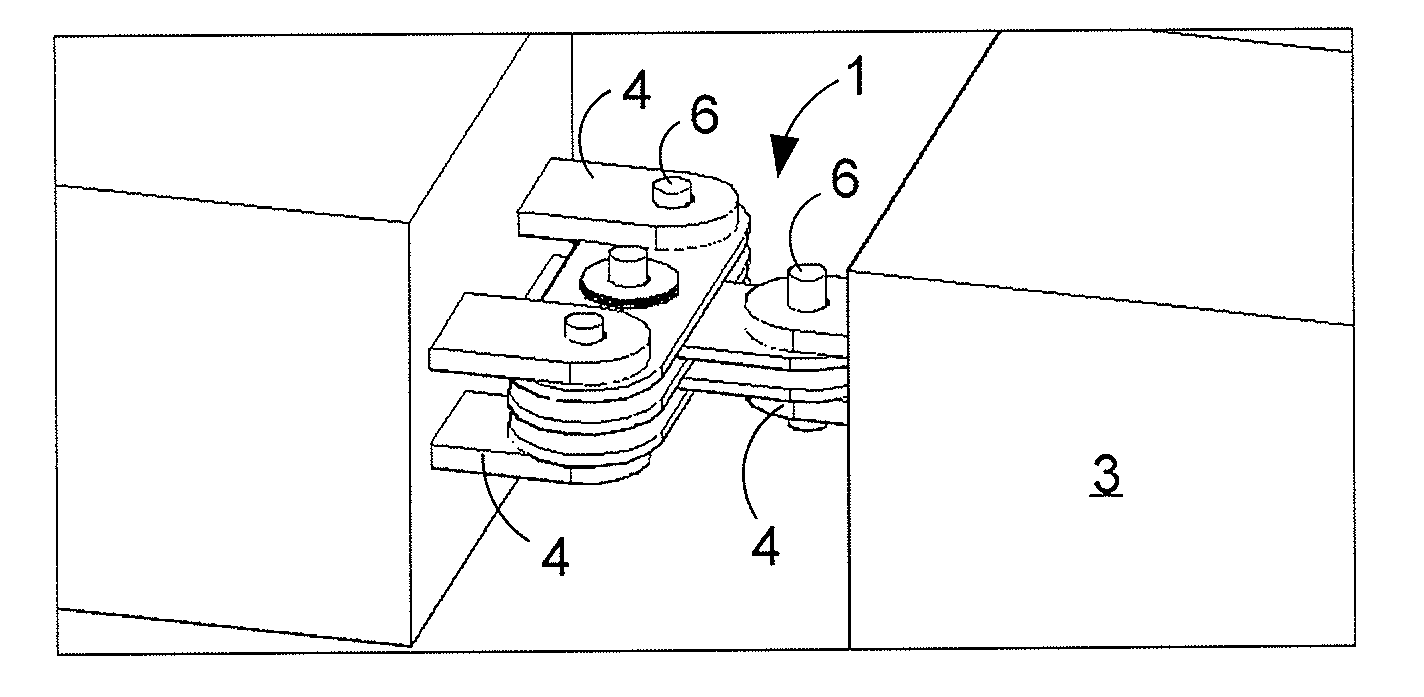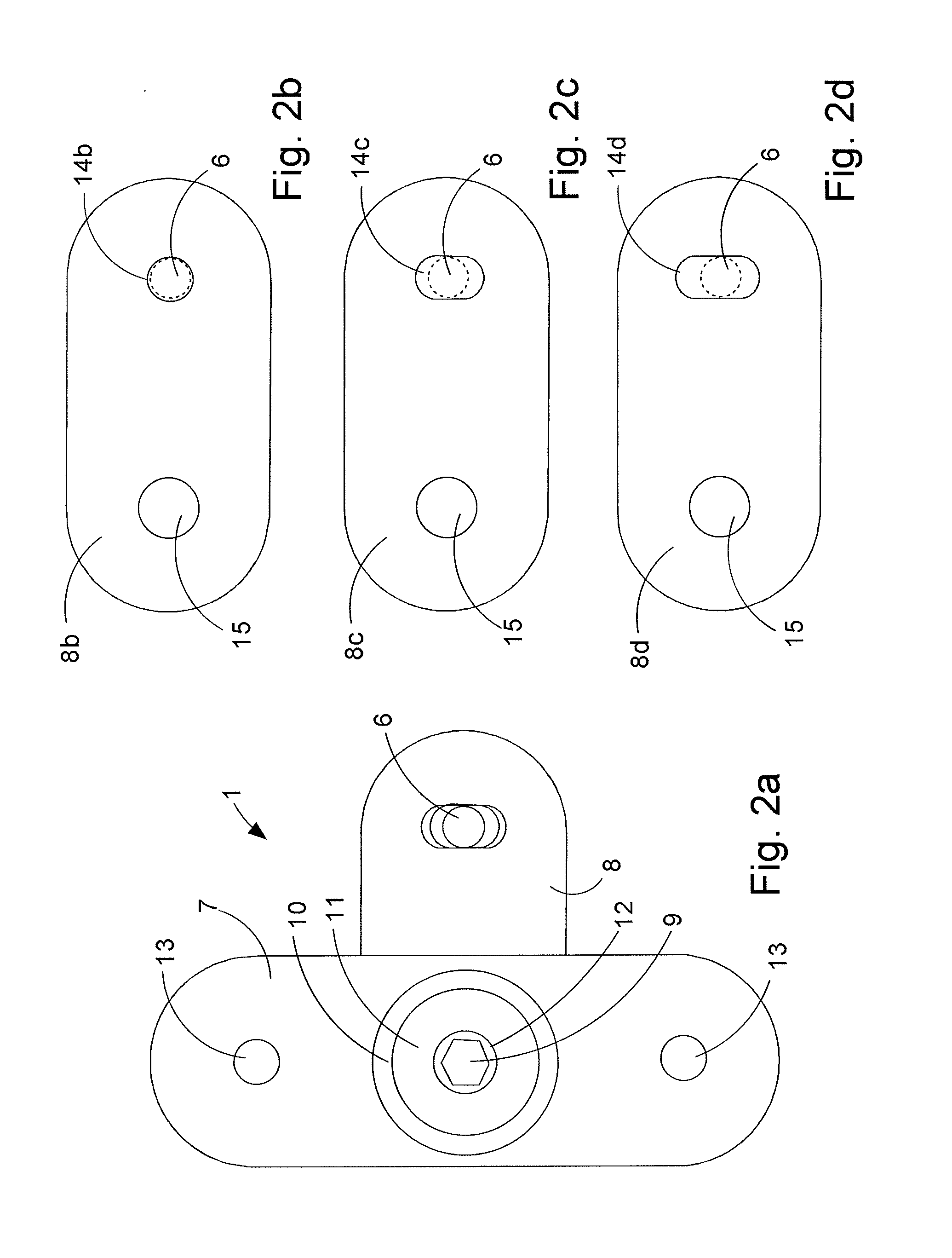Passive damper
a damper and passive technology, applied in the direction of spring/damper, shock-proofing, mechanical equipment, etc., can solve the problems of prone to malfunction, expensive and complicated active dampers, and need extensive maintenan
- Summary
- Abstract
- Description
- Claims
- Application Information
AI Technical Summary
Benefits of technology
Problems solved by technology
Method used
Image
Examples
Embodiment Construction
[0034]Below follows a description of embodiments of the present invention, referring to the figures. In the below description, a member of a structure, such as a building, is understood to include e.g. pillars, beams, stiffeners, stretchers, v-braces and the like, and any member which maintains the rigidity of a structure of a construction or structural body of e.g. a building or the like.
[0035]With reference to FIGS. 1a to 1d a damper 1 according to an exemplary embodiment is shown connected to members 2, 3 of a structure, such as a building. The damper 1, in this embodiment is substantially T-shaped. Each end of the T-shaped damper is connected to the structure. The two opposite ends to the “top” or horizontal line of the T are connected via respective pins 6 and brackets 5 to member 3 of the structure. The free end of the “leg” or vertical line of the T is connected via a pin 6 and a bracket 4 to member 2 of the structure.
[0036]With reference to FIGS. 2a-2d, 3a-3d and 4a-4d the d...
PUM
 Login to View More
Login to View More Abstract
Description
Claims
Application Information
 Login to View More
Login to View More - R&D
- Intellectual Property
- Life Sciences
- Materials
- Tech Scout
- Unparalleled Data Quality
- Higher Quality Content
- 60% Fewer Hallucinations
Browse by: Latest US Patents, China's latest patents, Technical Efficacy Thesaurus, Application Domain, Technology Topic, Popular Technical Reports.
© 2025 PatSnap. All rights reserved.Legal|Privacy policy|Modern Slavery Act Transparency Statement|Sitemap|About US| Contact US: help@patsnap.com



